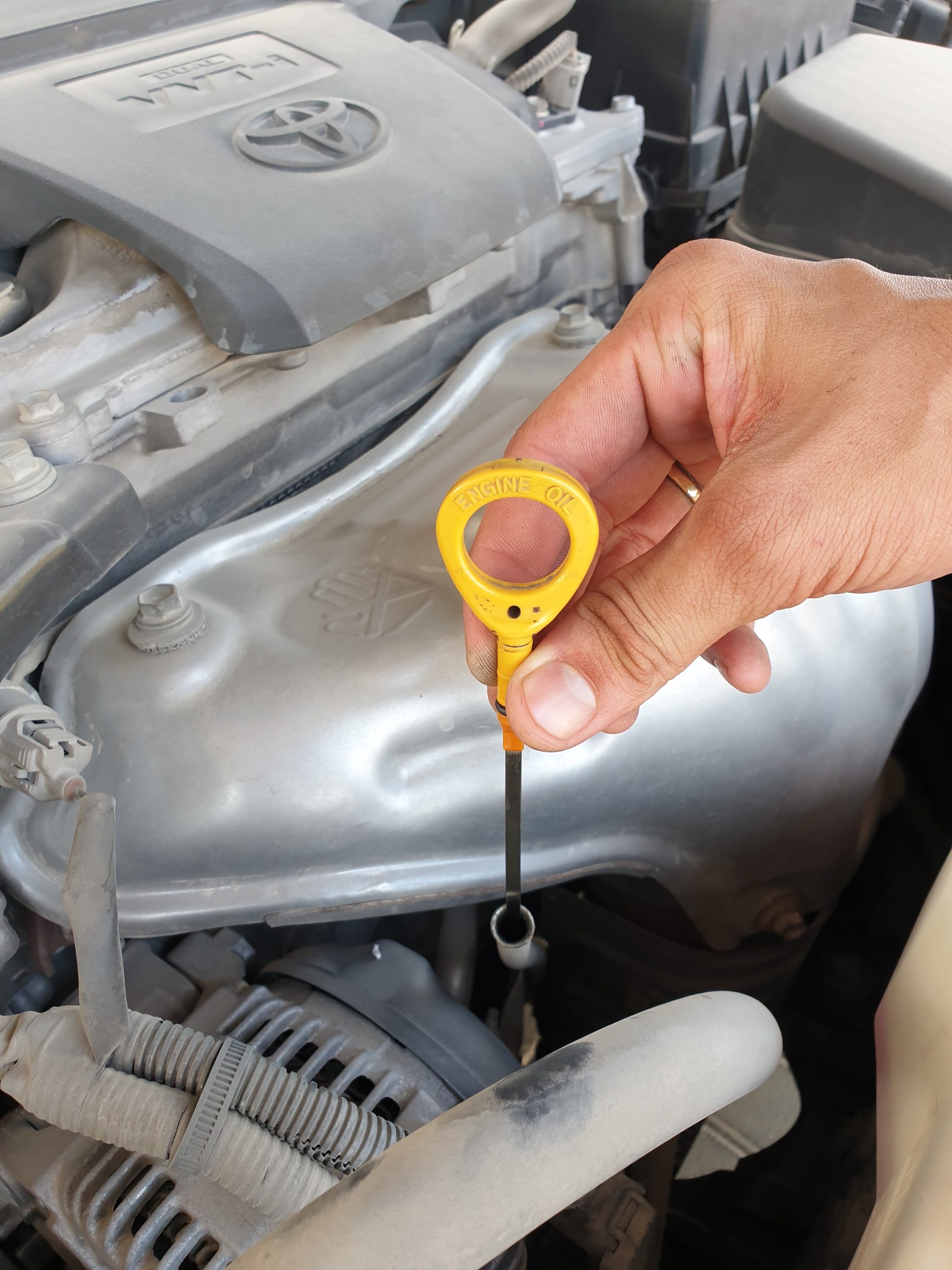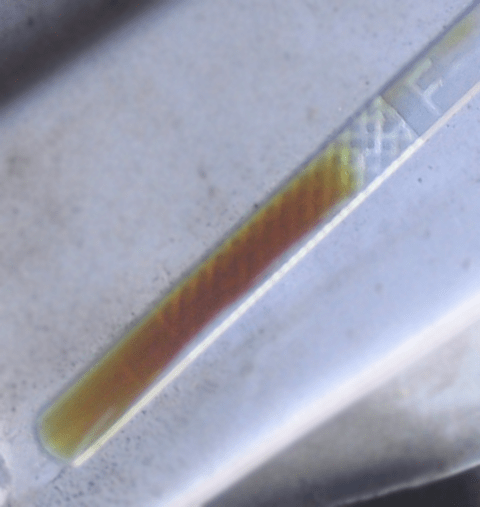How to check the engine oil level with a dipstick?

Park the vehicle on level ground and turn off the engine. Most manufacturers recommend at least five minute wait time after the engine is switched off. Wait for the oil to return into an oil sump before using a dipstick. Open the hood and find a dipstick. Check the owner manual if you cannot find it. A dipstick is usually an oval, inch-size yellow metal loop on top of a long vertical pipe or metal stalk. Dipstick Loop is white or yellow color for engine oil and red for transmission oil. Check the vehicle manual if in doubt.
Use a lint-free rag or paper towel in one hand, pull the metal loop to remove the dipstick, clean it with a rag or paper towel. After wiping the end of a dipstick with a rag, push it back into the stalk again. Make sure it is inserted fully into the position. There is an edge close to the metal loop to indicate the seating. Wait a few seconds and remove the dipstick again to determine the oil level.
How do you read the dipstick

At the end of the dipstick, check the oil reach. Look for the wet shiny oil mark to determine where the oil ends. There are markings or holes to indicate the L (low) and F (FULL) level of the engine oil. Sometimes there are lines for “Full and Low” with a cross-hatched area between the two. The reach of oil must end between the two marks. It is recommended and considered good if the oil level is close to the upper F (Full) mark.
If oil level is low
Check the oil level, if oil ends close to the “L” low mark, below the low mark, or no oil at the dipstick, top up the oil immediately. Be very careful not to overfill the engine. Use less than half a quart (less than 500ml) at a time. After top-up, use the dipstick to check the oil level and refill if necessary. Always use the correct oil type for the engine. You can’t use any oil. Check the SAE viscosity and service grade before top-up.
If oil level is high or overfilled
If you accidentally fill 1-2 millimeters above the max or F (FULL) mark, it is OK but not recommended. A massively overfilled engine with engine oil will harm the engine. Overfilling in diesel engines can cause runaway that will ultimately destroy the engine.
Signs of overfilled engine oil
Overfilled engine problems would be oil leaking, a thick cloud of white smoke from the exhaust pipe, strange noises, and oil burning smell, both in a typical diesel and petrol engines of cars and trucks
